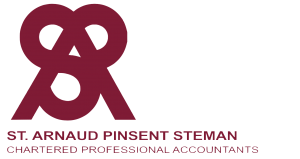Blog
Take time to read...
learn...
grow.

By Benjamin Teoh, CPA
•
03 Jun, 2022
It is a good idea for all individuals and business owners to set up access to their CRA personal or business accounts. By doing so, you are able to view important information like CRA mail, account balances, apply for benefits, request information, and more. Each individual and business has one account already set up, but perhaps has not accessed by anyone yet. By knowing your CRA account balance, you can ensure that there are no balances owing that you do not know about, and thus keep unnecessary interest payable as low as possible. Each province has their own log in system, so you may have to make an account for each provincial jurisdiction that you deal with. The link for CRA My Account (individuals) is here. ( https://www.canada.ca/en/revenue-agency/services/e-services/e-services-individuals/account-individuals.html ) The link for CRA My Business Account (corporations, partnerships) is here. ( https://www.canada.ca/en/revenue-agency/services/e-services/e-services-businesses/business-account.html ) Gaining access to each of these is similar. You can either use the same log in as a “sign-in partner” which includes most major banks or using a CRA username and password. The former is self-explanatory if you have an account, so this blog will focus more on the latter. For most people using the sign-in partner is easier since you do not need to remember another login. How to Register for an Account Upon clicking one of the above links depending on your needs, navigate down to CRA Register. The link you require you to enter your social insurance number, which can be found on an old tax return, T4 slip, among others if not available immediately. New Paragraph

By Benjamin Teoh, CPA
•
22 Dec, 2021
The Tax Free Savings Account (“TFSA”), established in 2009, is an excellent way for individuals to save money and grow their wealth in a tax-free manner subject to certain conditions. Anyone who is over eighteen years of age (nineteen in some provinces) and has a valid Social Insurance Number can open a TFSA and immediately have access to the full TFSA limit. TFSA Limit As of January 1, 2022, the TFSA limit will rise by $6,000, and the aggregate limit in 2022 is $81,500. Any unused amounts in the year can be carried forward to the next year. You can have multiple TFSA accounts with different providers, but the total in these accounts cannot be more than the year’s limit. You or any of your authorized representatives can check your available TFSA room on CRA’s My Business Account or phone the CRA at 1-800-267-6999. Be sure not to overcontribute, otherwise the penalties are very harsh. Contributions and Withdrawals Contributions to the TFSA come from after-tax income, and unlike an RRSP, does not grant any tax deductions. On the other hand, withdrawals from the TFSA are also not taxed, and TFSA room is not lost after a withdrawal (but the re-contribution must be made in the next year or later). Banks, credit unions, insurance companies, and trust companies can open help you to open a TFSA account.

By Benjamin Teoh, CPA
•
03 Dec, 2021
In previous blog posts, we discussed the shareholder’s loan and dividends ; in this one, we will follow up on that topic and talk about whether as a business owner, you should take a salary or a dividend at a high level. In theory, you should be indifferent to whether to take a salary or a dividend due to the theory of integration. How does a salary or bonus work? A salary or a bonus can be considered as one level of taxation, at the personal level, and is received in the form of a T4 slip. In the case of business, any salary and associated source deductions (CPP, EI, and income tax withheld) are deductible from the business’ net income. On the flip side, the individual receiving the T4 slip will record the income from the slip as a part of the year’s taxable income. How does a dividend work? See our prior blog post for a refresher. Dividends are paid from after tax income, meaning that part of the tax is paid in the corporation, and part is paid at the individual level. What is Integration? The tax system aims for income from a salary or bonus (as a T4) to be equal to that of a dividend after considering both personal and corporate taxes. Unfortunately there will always be minor differences, so one will have a small advantage over the other and integration will be different depending on which province you reside in. For most situations, the difference is only 0-2% either way. Other Considerations: Canada Pension Plan (“CPP”) Contributions to CPP are mandatory if salaries or bonuses are paid. For business owners, they must pay both the employer and employee portions. Each portion is $3,499.80 using 2022 rates. While it is a useful retirement tool, keep in mind that this is cash locked up until retirement. You should consider whether CPP will be a part of your personal retirement plan. Registered Retirement Savings Plans (“RRSP”) Only earned income contributes to increasing your RRSP room, so this is only restricted to salaries in this case. This will be discussed in a future blog post, but RRSPs (or other various Registered Pension Plans), are another useful way to defer taxes and save for retirement. Penalties and Interest One of the most painful mistakes to make when dealing with taxes is the late payment of source deductions. The penalty starts at 3% and goes to 10% after being late for only seven days. Interest is also charged at the prescribed interest rate on late payments (as of December 3, 2021, this is 5%). Those paying salaries have to be disciplined in paying their source deductions on time otherwise the avoidable penalties start to add up fast. Your accountant should be able to help calculate whether a salary or a dividend will be more tax advantageous for you. After considering the numbers, as well as the above, you should be able to decide which remuneration plan is right for you!

By Benjamin Teoh, CPA
•
25 Oct, 2021
CPA Canada has issued a new standard for compilation engagements which affects anyone that previously hired an accountant to prepare “Notice to Reader” financial statements. This is effective for entities (corporations, partnerships, etc.) that have a period/year end on or after December 14, 2021. This blog post will highlight some of the changes, as well as what to expect from your accountant. For further information, please see the management briefing linked at the end of this post.

By Benjamin Teoh, CPA
•
11 Oct, 2021
As a business owner, you will hear the term “shareholder loan” thrown around quite a bit by your accountant and maybe wondered what they meant. This concept can have many names including “due to shareholder,” “due from shareholder,” “owner’s draw,” among others. These all mean the same thing and refer to the account(s) summarizing the net financial transactions between the Company and any of its shareholders. To visualize it, imagine a vertical line (or see the diagram below). Anything on the right side means that you have put more money into the corporation that you have taken out. This means that the Company owes you money; this can be referred to as a credit in the shareholder loan and the result is that you can draw money from the company tax free until the balance is zero (since you are just taking out the money that you put into the Company before). On the flip side, a shareholder loan debit position (left side) means that you drew out more money from the corporation than you contributed. There are serious tax consequences for leaving the shareholder loan in a debit position for more than one year, discussed below. To reduce it, the shareholder an either repay the loan, or take income in the form of a salary or dividend. The salary vs dividend discussion will happen in a future blog post.
Book a complimentary accounting & tax strategy session

St. Arnaud Pinsent Steman CPA
1653-91 Street SW,
Edmonton, AB, T6X 0W8
(780) 448-0399
Business Hours
- Mon - Fri
- -
- Sat - Sun
- Closed
© 2024
All Rights Reserved | St Arnaud Pinsent Steman





